In Pittsburgh, people are said to bleed black and gold. The obsession starts at home, where children are encouraged to grow up to be lifelong fans of the hometown teams. For some Pittsburgh Penguins players and their fathers, their connections to the organization run deeper than mere fandom. Seven father-son duos have taken the ice with the Penguins, proving that black and gold might just be in the blood after all.
Marc and Taylor Chorney
Marc Chorney, a defenseman and native of Fort William, Ontario, was drafted by the Penguins 115th overall in the 1979 NHL Entry draft, while he was a junior at the University of North Dakota. Marc played 139 regular-season and seven postseason games for Pittsburgh from 1980-83 and scored 24 total points with the franchise.
Marc was traded to the Los Angeles Kings in 1983. He played one season in L.A., then signed as a free agent with the Washington Capitals on July 11, 1984. He did not earn a spot on the roster.
Taylor Chorney followed a similar path when breaking into the NHL. Born in Thunder Bay, Ontario, but raised in Hastings, MI, Taylor played defense at the University of North Dakota before being drafted 36th overall by the Edmonton Oilers in 2005. He didn’t make his NHL debut until April 2009 but filled the time by representing Team USA at the 2006 and 2007 World Junior Championships.
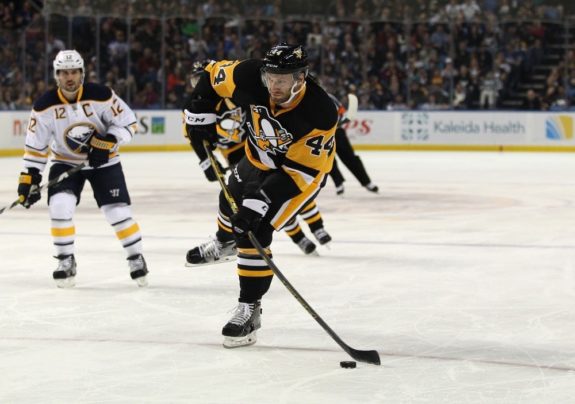
Taylor signed with the Penguins in 2014 but spent the majority of the 2014-15 season with the club’s American Hockey League (AHL) affiliate in Wilkes-Barre. He played seven regular-season games and five playoff games in Pittsburgh. He did not score any points with the team.
In addition to playing with the Penguins and Oilers, Taylor suited up with the St. Louis Blues, Columbus Blue Jackets, and Washington Capitals. He signed with HC Lugano of the Swiss-A league in July 2018.
Wayne and Alex Hicks
Wayne and Alex Hicks were the first father-son duo to play for the Penguins. Wayne, a right wing from Aberdeen, Washington won a Stanley Cup with the Chicago Blackhawks in 1961, despite playing just one playoff game with the club. He then bounced to the Boston Bruins and Montreal Canadiens organizations before becoming the first American-born player to suit up for the Philadelphia Flyers in their inaugural season, 1967-68.
The Flyers traded Wayne to Pittsburgh in 1968, allowing him to play for two of the “next six” expansion teams in their first seasons. In just 15 games with Pittsburgh, Wayne scored 11 points. He left the NHL after that season.
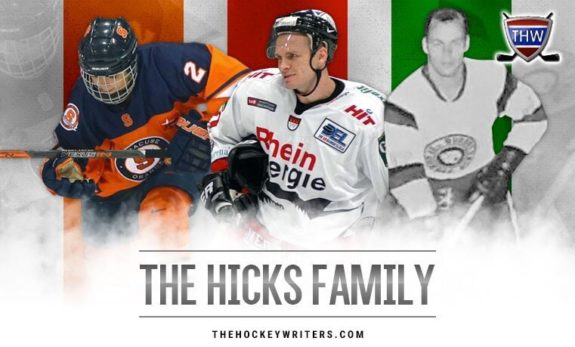
Wayne’s son Alex, from Calgary, Alberta, was an undrafted center who got his break with the Mighty Ducks of Anaheim in 1995 after playing four years of college hockey at the University of Wisconsin-Eau Claire. Alex was traded to Pittsburgh in 1996.
Alex played 113 regular-season games and 11 playoff games with the Penguins over two seasons. He grabbed 40 points and one playoff assist with the franchise. To round out his 258-game NHL career, Alex played with the San Jose Sharks and the Florida Panthers. He moved on to coaching in 2015 and has spent four seasons as an assistant coach for the Arizona State University men’s ice hockey team.
Bob & Mark Johnson
While Bob Johnson did not play for the Pittsburgh Penguins, he is one of the most important builders in their history. Born in Minneapolis, MN, Bob is known in the world of college hockey for coaching the University of Wisconsin Badgers to three NCAA National Championships and six WCHA Tournament victories.
Bob joined the NHL as head coach of the Calgary Flames in 1982. He led the team to the playoffs in five consecutive seasons but he didn’t earn a Stanley Cup Victory until 1990-91, his only season as head coach of the Pittsburgh Penguins, and his last one in the NHL. Bob died of brain cancer later that year. At the time of his death, Bob was the winningest American-born coach in the NHL with 234 wins. Three coaches, including former Penguins coach Dan Bylsma, have since surpassed that record.
Bob might have died before his time, but his legacy remained. For the rest of the 1991-92 season, the Penguins wore “Badger” patches on their jerseys and had his trademark phrase, “It’s a Great Day for Hockey,” painted on the Civic Arena ice surface. The team also had his name inscribed on the Stanley Cup after their repeat victory in 1992.
Mark played his first NHL game in 1980 with the Penguins and played 136 regular-season and 10 playoff games with the club over three seasons. He posted 62 points in the regular season and seven points in the postseason before being traded to the Minnesota North Stars in 1982. In addition to playing for the Penguins and North Stars, Mark dressed for the Blues, New Jersey Devils, and Hartford Whalers. He retired from the NHL in 1990.
Like his father, Mark took up coaching. Mark has coached the Wisconsin Badgers men’s ice hockey team, the American National men’s and women’s hockey teams, and the Madison Monsters of the United Hockey League (UHL). As of 2018, Mark is the head coach of the University of Wisconsin women’s ice hockey team.
Bob and Brent Johnson
While not related to Bob and Mark Johnson, Bob and Brent Johnson had fans seeing double. Both Bob and Brent were goalies who wore jersey No. 1 and hailed from Farmington, MI. Bob played just 23 games in the NHL, 12 of them with Pittsburgh in 1974-75. The undrafted netminder broke into the league with the St. Louis Blues in the 1972-73 season.
Bob’s numbers with the Penguins were less than thrilling, hitting a 3-4-1 record with a .858 save percentage and a 5.03 GAA. His minor league career fared better, earning him the WHL’s Outstanding Goalkeeper Award in 1971-72.
Brent had a more satisfying NHL career than his father. Drafted by the Colorado Avalanche 129th overall in 1995, he had an extensive career with the Blues and Capitals, and an eight-game stint with the Phoenix Coyotes before signing as a free agent with Pittsburgh in 2009.
https://youtu.be/O9LZ45kuBDs
Brent played 62 regular-season and three postseason games with the Penguins over three seasons. He posted a 29-18-6 record and held a .907 save percentage and 2.61 GAA with the club. However, Brent is best known around town for his two fights in nine days with New York Islanders goaltender Rick DiPietro and center Micheal Haley. As of 2018, Brent is a studio analyst for NBC Sports Washington.
Greg and Ryan Malone
Greg and Ryan Malone took the Pittsburgh hockey connection to a whole new level. Greg, a center from Chatham, New Brunswick, was drafted 19th overall by the Penguins in 1976. He played 495 regular-season games and 18 postseason games with the Penguins over seven seasons, tallying 372 total points with the club. Though Greg was traded to the Whalers in 1983, and also had a stint with the Quebec Nordiques, he put down roots in Pittsburgh and would return to the organization in 1988 as a scout. He won two Stanley Cups with the team, in 1991 and 1992, while he held this position.
Ryan, a left winger, was born in the city and attended Upper St. Clair high school before starting his junior hockey career. Ryan was drafted by the Penguins 115th overall in 1999 and was the first Pittsburgh-born player to play for the team. Like his father, Ryan chose to wear No. 12 and adopted the nickname “Bugsy” after the title character of the 1976 musical gangster comedy, Bugsy Malone. With Ryan’s first hat trick on Dec. 15, 2006, against the New York Islanders, Greg and Ryan became the second father-son duo in NHL history to score hat-tricks for the same team.
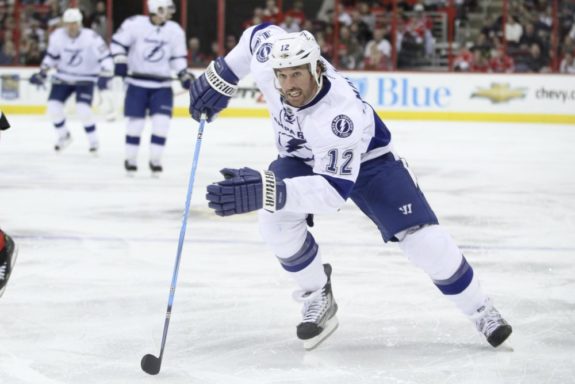
Ryan led the Penguins in goals his rookie year with 22 and was named to the NHL All-Rookie Team in 2004. He assumed the role of alternate captain in 2008. He played 299 regular-season and 25 playoff games with the Penguins over four seasons, posting a combined 185 points.
Ryan was traded to the Tampa Bay Lightning that same year. After six years with the Lightning and a bout of legal trouble, Ryan’s contract was terminated. He played six games with the New York Rangers in 2014-15 before leaving the NHL. In 2017, Ryan signed an agreement with the Minnesota Wild to attend training camp. He played 12 games with the club’s AHL affiliate, the Iowa Wild, but was released after missing selection to the 2018 Olympic team.
Gilles and Eric Meloche
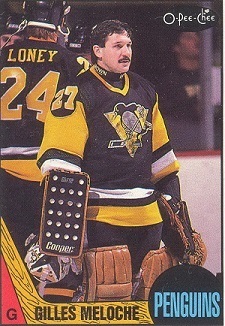
Goalie Gilles Meloche has been with the Penguins organization for over two decades. A native of Montreal, Quebec, he was drafted 70th overall in 1970 by the Chicago Blackhawks in 1970, and an extensive career with the now-defunct North Stars, California Golden Seals, and Cleveland Barons. He was traded to the Penguins in 1985 and played his final three years in the NHL with the franchise.
Following his retirement as a player, Gilles served as a scout for the Penguins from 1989 to 2006 and has had a front office role in all five of the Penguins’ Stanley Cup championships. During his time as a scout, Gilles also doubled as a goaltending consultant. He assumed the role of goaltending coach in 2006 and is credited with shaping Marc-Andre Fleury into an elite netminder. Gilles was replaced by Mike Bales in 2013-14, though he is still a member of the Penguins organization as a special assignment scout.
Gilles’ son Eric, also a native of Montreal, didn’t follow dad in donning the pads, but the center did choose to pay homage to his father by wearing No. 72, the reverse of Gilles’ No. 27. Eric was drafted 186th overall by the Penguins in 1996. Though he spent most of his time in Wilkes-Barre, Eric played 61 games for Pittsburgh over three seasons and contributed 17 points. He signed as a free agent with the Flyers in 2004 but left the NHL after just 13 games with the club.
Ulf and Philip Samuelsson
Ulf Samuelsson has been called “a nasty guy” and “the perfect [piece] to the puzzle” by Penguins former radio play-by-play announcer Paul Steigerwald. A gritty defender with the reputation of an antagonist, the native of Fagersta, Sweden, was drafted 67th overall by the Whalers in 1982. The trade that brought Ulf, Ron Francis, and Grant Jennings to Pittsburgh on the eve of the 1991 trade deadline is one of the most-discussed in franchise history.
The Robocop, as Ulf was known, played 277 regular-season and 66 postseason games with the Penguins, contributing 112 total points, and racking up 927 total penalty minutes over five years with the club. The two-time Stanley Cup champion played for the Rangers, Flyers, and Detroit Red Wings, and amassed 2,453 NHL penalty minutes before announcing his retirement in 2001. Ulf began coaching in 2003 and was most recently an assistant coach with the Chicago Blackhawks before the head and assistant coaches were ousted this season.
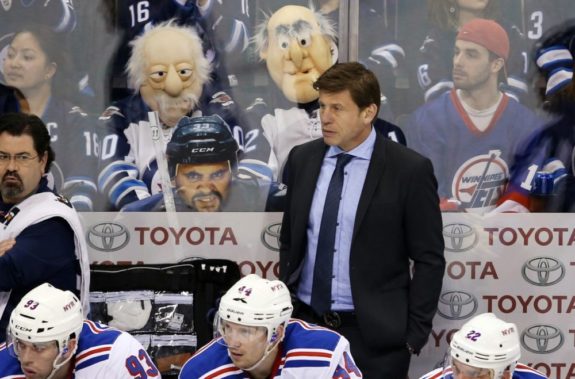
Philip Samuelsson, also a defenseman, does not strike the same fear into opponents as his dad did. A native of Leksand, Sweden, he was drafted 61st overall by Pittsburgh in 2009. He made his NHL debut with the Club in 2013. Despite an accolade-filled high school, college, and junior career where he played under his father for two different programs, Philip played just five games for the Penguins and did not tally a point nor a penalty minute. He was traded to the Arizona Coyotes in 2014, where he played just eight games over two seasons, posting only two penalty minutes. In 2018, Philip signed a one-year deal with the Lehigh Valley Phantoms, the Flyers AHL affiliate.
The Penguins are not the only team in the NHL that have father-son connections. Some of the most famous families in hockey have scattered members across the entire NHL, earning them a spot in the Top-Five Father-Son Duos in NHL History.